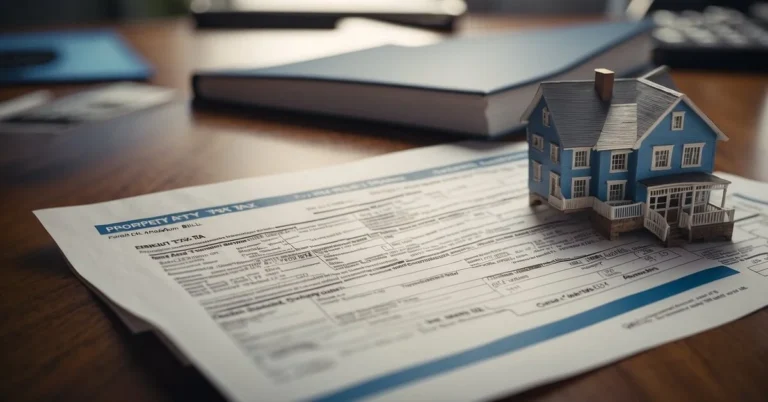Financial planning for seniors is essential for maintaining a comfortable and secure lifestyle in retirement. We all want to ensure that our golden years are as enjoyable and stress-free as possible, and the cornerstone of that serenity is financial stability. By addressing our financial situation early, we can strategize to maximize savings, manage expenses, and take advantage of available benefits that can ease our monetary burdens.
Given the array of financial concerns that come with aging, it’s wise for us to thoroughly evaluate our assets, consider healthcare costs, and prepare for unforeseen expenses. Prudent management of investments can help preserve our funds for longer, ensuring that we don’t outlive our resources. Moreover, staying informed about senior discounts and benefits can provide us with extra savings.
Key Takeaways
- Effective financial preparation supports a worry-free retirement.
- Strategic handling of assets is crucial to sustaining a desired lifestyle.
- Awareness of benefits tailored for seniors contributes to financial well-being.
Understanding Financial Planning for Seniors
When we approach retirement, our financial planning for seniors becomes crucial to secure a comfortable future. It’s about more than just savings; it’s creating a roadmap for financial peace during our golden years.
Importance of Financial Planning in Retirement
Budgeting is Key: As we transition from earning a regular income to relying on retirement funds, meticulous budgeting becomes essential. Without a steady paycheck, we need to ensure that our expenses align with our income sources, such as Social Security, pensions, and any savings or investments. According to Senior Living, around 65 million Americans rely on Social Security payments annually. Hence, understanding how these benefits fit into our financial plan can help us prepare better for the years ahead.
Health Care Costs: One of the most significant expenses in retirement is healthcare. Unanticipated medical expenses like copayments, deductibles, and insurance premiums can quickly deplete our savings. Fidelity’s research mentioned by SeniorLiving.org suggests that a couple retiring at age 65 might spend an average of $295,000 out-of-pocket on healthcare. Thus, incorporating healthcare costs into our financial strategy is a crucial part of retirement planning.
Setting Financial Goals for Retirement
Defining Lifestyle Goals: When we begin retirement planning, setting clear financial goals is vital. Do we want to travel, move closer to family, or pursue hobbies? Each of these choices has financial implications. By defining our lifestyle goals, we can better understand the necessary steps to achieve our ideal retirement.
Estate Plans and Legacy: Decisions on how we want to handle our estate not only affect us but also our loved ones. Strategies for managing our assets, such as wills, trusts, and beneficiary designations, are components of financial planning that need our attention. The National Council on Aging emphasizes the importance of having a plan to boost income and savings while protecting against scams that target seniors.
Through careful consideration of these essential aspects of financial planning, we can approach retirement confidently, knowing that our finances are structured to support our envisioned future.
Budgeting for a Sustainable Retirement Lifestyle
When it comes to financial planning for seniors, strategic budgeting is essential to enjoy a comfortable retirement. Let’s dive into creating a budget that works for you and managing everyday expenses.
Creating a Retirement Budget

To start, we need to outline our income sources and expected expenditures. Retirement income may come from several places: pensions, Social Security benefits, annuities, or part-time work. It’s important to know exactly how much we’re working with. Next, we’ll focus on monthly expenses: housing, utilities, food, healthcare, and any debts. It’s helpful to use a simple table to organize these figures:
| Expense Category | Monthly Estimate |
|---|---|
| Housing | $XXX |
| Utilities | $XXX |
| Food | $XXX |
| Healthcare | $XXX |
| Debts | $XXX |
| Total | $XXX |
Once we’ve filled out our table with realistic numbers, we’ll have a clear picture of our monthly budget. Remember to adjust your expectations and expenses to fit into what is realistically affordable.
Managing Living Expenses
Having a handle on our cost of living is crucial. Essential expenses like food and housing can fluctuate, so keeping a close watch prevents surprises. Prioritizing needs over wants helps ensure that every dollar is used effectively.
To manage living expenses better, consider these points:
- Food: Shop smart by using coupons, buying in bulk, and opting for store brands. Try to cut down on dining out to save money.
- Entertainment: Look for free or low-cost community events, take advantage of senior discounts for movies, museums, and parks.
- Utilities: Save on electricity by implementing energy-saving habits like LED bulbs and programmable thermostats.
By sticking to your carefully planned retirement budget and adjusting your spending on food, entertainment, and other living expenses, you can maintain a stable financial situation throughout your golden years.
Healthcare Planning

As we explore financial planning for seniors, it’s crucial to address healthcare costs which are often the cornerstone of a secure retirement. Managing healthcare expenses involves an understanding of Medicare options and long-term care needs, integral parts of your financial health.
Navigating Medicare and Insurance
Medicare can be complex, consisting of multiple parts including Part A for hospital coverage, Part B for medical services, and Part D for prescription drugs. Additionally, Medicare Advantage Plans (Part C) offer an alternative with varied coverage options and costs. It’s essential to enroll during your initial enrollment period to avoid late penalties. For additional coverage, medigap policies can fill gaps in Medicare, and we should consider them in light of our health needs.
- Medicare Part A: Typically no premium if you have worked and paid into the system.
- Medicare Part B: Monthly premium based on your income.
- Part D: Variable premiums; check for the plans that cover your prescriptions.
Consider navigating care, pensions, and estates to understand how these elements integrate with your financial plan.
Long-Term Care Planning
Long-term care can drastically affect our financial health, so we must plan for it. Look into long-term care insurance early, before health issues arise, to secure lower premiums. Weigh the benefits of different policies—some may cover home care, assisted living, or nursing homes. Be aware of:
- Average Costs: E.g., assisted living ($54,000/year), nursing home ($108,405/year), home care aid ($56,160/year for basic assistance).
- Long-Term Care Insurance: Offers different levels of coverage; premiums based on age and health at the time of purchase.
For financial perspectives on healthcare costs like assisted living or nursing homes, you might find reading about senior healthcare planning to be useful.
Investment Management and Preservation
As we navigate the golden years, smart financial planning for seniors involves careful investment management and preservation. We aim to ensure that retirement investments like 401(k)s, bonds, and stocks continue to provide stability and growth while aligning with our changing risk tolerance.
Diversification of Retirement Accounts
Why Diversification Matters:
- Diversifying a retirement portfolio can minimize the impact of market volatility.
- Strategically spreading investments across various asset classes (stocks, bonds, real estate) can balance out risks and returns.
How to Diversify:
- Evaluate existing retirement accounts including 401(k) plans and IRAs.
- Include a mix of:
- Stocks: for potential growth.
- Bonds: for more stable, predictable income.
- Other investment vehicles are tailored to your post-retirement needs.
Assessing Risk Tolerance
Understanding Risk Tolerance:
- Risk tolerance often diminishes as we age, requiring a reassessment of our investment strategies.
- Periodic reviews of our investment portfolio are crucial to ensure they align with our current tolerance for risk and long-term goals.
Adjusting Investments:
- Shift toward conservative investments like bonds or dividend-paying stocks to preserve capital.
- Consult with financial advisors experienced in safe investments for seniors to tailor a strategy that fits your specific risk profile.
By focusing on the composition and preservation of our retirement investments, we safeguard our financial future against uncertainties while aiming for continued growth. It’s a balancing act between maintaining enough risk to see our assets grow and limiting that risk to protect what we’ve worked so hard to accumulate.
Senior Benefits and Discounts
We all know the importance of financial planning for seniors, especially when it comes to maximizing available benefits and discounts. This section will guide you through understanding social programs designed to support seniors and exploring various discounts and memberships that can make a big difference in managing expenses.
Understanding Social Programs
Social programs play a pivotal role in financial security as we age. Social Security and retirement benefits are just the starting point. It’s crucial to get familiar with tax credits and deductions that can increase your disposable income. For those who need assistance with heating costs, the Low Income Home Energy Assistance Program (LIHEAP) is a valuable resource that can offer financial aid to manage utility bills.
Exploring Senior Discounts and Memberships
Senior discounts can substantially lower the cost of goods and services. For instance, joining AARP can unlock savings ranging from restaurant meals to travel and prescription drugs. Seniors can typically start benefiting from these discounts as early as age 50.
| Services and Memberships | Age Eligibility | Approximate Discount Range |
|---|---|---|
| Restaurant Meals | 50+ | 10% – 15% |
| Travel Discounts | 50+ | Varied |
| Prescription Drugs | 50+ | Up to 80% |
Leveraging these senior discounts and memberships is a smart way to make your retirement savings stretch further. Remember, every penny saved is a penny that can be used toward other essential expenses or leisure activities that you’ve worked hard to enjoy in your golden years.
Preparing for the Unexpected
When tackling financial planning for seniors, we need to focus on building resilience against sudden financial demands. Let’s explore essential strategies to secure our financial future.
Emergency Funds and Unexpected Expenses
Creating an emergency fund is a cornerstone of financial preparedness. Our goal should be to set aside funds that cover at least three to six months of living expenses. For unexpected expenses, it’s wise to consider liquidity; we want quick access to our funds without facing significant penalties or delays. Here’s a brief overview of what our emergency savings should look like:
- Aim for Three to Six Months: Set a minimum target for our emergency fund to cover essential expenses for this period.
- Accessibility is Key: Ensure this money is in a savings account or a similar, easily accessible form.
An adequate emergency fund helps us handle unforeseen events like health emergencies or urgent home repairs without disrupting our financial stability.
Insurance Policies

The right insurance policies act as a safety net. Two types that need our attention are health insurance and long-term care insurance.
- Health Insurance: Critical for covering everyday medical needs and unexpected health costs.
- Long-Term Care Insurance: With the potential costs of long-term care being high, this insurance can be particularly important to protect our savings from being depleted.
An investment in these insurance plans ensures that we are not caught off guard by hefty medical bills or long-term care costs.
Frequently Asked Questions
How do you financially plan for old age?
We begin by assessing our current financial situation, estimate future expenses and income, and consider long-term care needs. It’s crucial to factor in longevity, inflation, and potential healthcare costs. Getting an early start on saving and investing can also compound our benefits over time.
What are the key elements to include in an elder care financial planning checklist?
Our checklist should include a detailed budget, healthcare directives, a durable power of attorney, and an up-to-date will. It’s also important to review all insurance coverages to ensure they’re adequate for future needs and to organize all important documents for easy access.
How can low-income seniors manage their finances effectively?
For low-income seniors, prioritizing expenses and taking advantage of government assistance programs, like Social Security and Medicare, is essential. Seniors can also seek financial management advice from nonprofit organizations dedicated to supporting seniors with financial planning.
What are the best ways for seniors to prepare for healthcare costs?
Seniors should consider purchasing supplemental insurance to cover the costs not included in Medicare and set aside savings specifically for health-related expenses. Additionally, exploring long-term care insurance options can prove beneficial for covering the costs of potential extended care needs.
We hope our information were helpful to you. If you liked this article you may also like:






